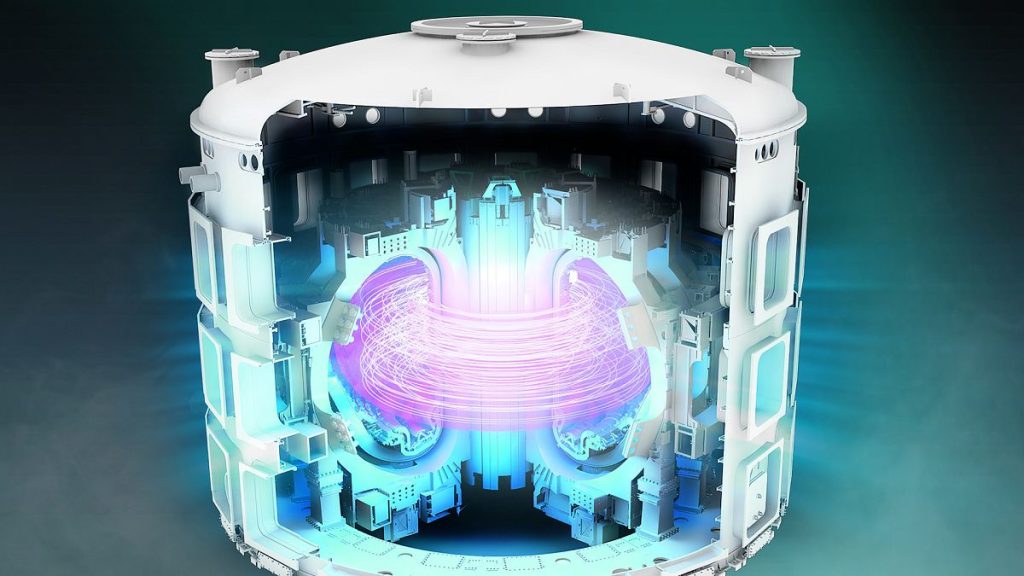ITER: A Global Quest for Clean Energy
Deep in the heart of Provence, France, a monumental scientific endeavor is underway. The International Thermonuclear Experimental Reactor (ITER), a collaboration of over 30 nations, is striving to achieve a breakthrough in energy production: harnessing the power of nuclear fusion, the very process that fuels the sun and stars. This ambitious project involves constructing the world’s largest tokamak, a magnetic confinement device designed to contain and control plasma heated to temperatures exceeding 150 million degrees Celsius. The goal is clear: demonstrate the feasibility of generating net energy from fusion, a potential game-changer in the global quest for clean and sustainable energy. This international collaboration, born from a 2006 agreement among major powers, represents a shared dream of unlocking a virtually limitless, environmentally friendly energy source. The sheer scale and complexity of ITER are unprecedented, demanding the collective expertise and resources of national laboratories from around the world, converging in this unique scientific hub.
At the core of ITER lies the principle of nuclear fusion, where two light atomic nuclei are fused into a single heavier nucleus, releasing enormous amounts of energy in the process. Unlike nuclear fission, which splits atoms and is currently used in nuclear power plants, fusion offers a safer and more sustainable path. While the sun achieves fusion through immense gravitational pressure, on Earth, two primary methods are being explored: inertial confinement fusion, which uses powerful lasers to compress and heat fuel pellets, and magnetic confinement fusion, the method employed by ITER. In ITER’s tokamak, a minuscule amount of deuterium and tritium, isotopes of hydrogen, is heated to extreme temperatures. This extreme heat transforms the fuel into plasma, a superheated state of matter, where electrons are stripped from atoms, leaving a swirling sea of charged particles. Powerful magnets confine this plasma within the tokamak, allowing the particles to collide and fuse, releasing energy in the form of highly energetic neutrons. These neutrons then strike the walls of the chamber, transferring their heat to water, which produces steam to drive turbines and generate electricity. This process builds upon decades of research in tokamak physics, scaling up from smaller experimental devices to the massive ITER project in pursuit of achieving net energy gain.
The advantages of fusion power are significant. Compared to fission, fusion reactions produce no long-lived radioactive waste, eliminating the complex and costly challenges of waste disposal. The fuel for fusion, deuterium and tritium, is readily available, with deuterium extracted from seawater and tritium produced from lithium, a relatively abundant element. Furthermore, fusion reactions are inherently safe, with no risk of meltdown or chain reactions. ITER’s tokamak, containing only a few grams of fuel at any given time, minimizes the potential for a large-scale accident. This stands in stark contrast to fission reactors, which operate with significantly larger amounts of radioactive material, posing a greater risk, as demonstrated by historical incidents like Chernobyl. Fusion offers the promise of a clean, sustainable, and safe energy source, a crucial step towards mitigating climate change and securing a stable energy future.
The path to achieving fusion energy, however, is fraught with challenges. The extreme temperatures and pressures required for fusion reactions necessitate complex engineering and advanced materials. ITER’s journey has been marked by technical hurdles, including issues with component manufacturing and alignment, leading to delays and cost overruns. The original timeline for first plasma operations, initially projected for 2025, has been shifted, with full commissioning now anticipated around 2039. The project’s budget has also escalated significantly, reflecting the complexities of this ambitious endeavor. One prominent setback involved misaligned welding surfaces on segments of the vacuum chamber, requiring extensive rework and highlighting the exacting precision demanded by this cutting-edge technology. Despite these challenges, ITER remains steadfast in its commitment to achieving fusion power, adapting its timelines and strategies to overcome obstacles and stay on course towards its ultimate goal.
Beyond the technical complexities, ITER stands as a testament to international cooperation, uniting nations in a shared scientific pursuit. This collaboration has weathered geopolitical tensions, demonstrating the power of a common goal to transcend political differences. The shared dream of harnessing fusion energy has bound together nations that are not always ideologically aligned, forging a partnership that has persisted through changing global landscapes. This collaborative spirit is essential to the project’s success, pooling the expertise and resources of diverse nations to overcome the formidable challenges of fusion research. The resilience of this international partnership in the face of geopolitical shifts underscores the global significance of fusion energy as a potential solution to shared energy and climate challenges.
While the realization of plentiful fusion energy remains a long-term ambition, ITER’s progress holds immense promise for the future. Although it may not provide immediate relief from the pressing climate crisis, fusion offers a crucial piece of the puzzle for a sustainable energy landscape. As the effects of climate change continue to unfold, the need for clean, abundant energy sources becomes increasingly urgent. ITER aims to address this need, providing a long-term solution for a carbon-free energy future. The project’s advocates argue that the longer it takes to achieve fusion, the more critical it becomes, emphasizing the importance of sustained investment and research to accelerate the development of this transformative technology. ITER represents not just a scientific endeavor, but a global investment in a future powered by clean, sustainable, and virtually limitless energy.














